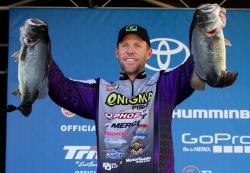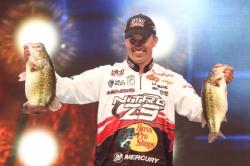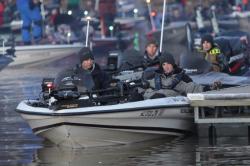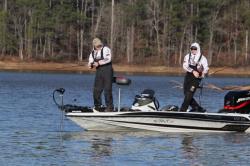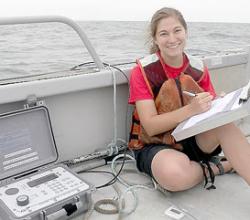Remedy for Fishing Fever is Missouri’s March 1 Trout Opener
Today’s feature comes to us from the Missouri Department of Conservation.
from The Fishing Wire
Thousands of anglers flock to trout parks around the state for opening day of catch-and-keep trout fishing.
JEFFERSON CITY, Mo. – As the wintery season winds down, anglers throughout the Show-Me State are beginning to show some signs of trout fever. Symptoms include: tying flies, putting new fishing line on reels, checking waders for holes, and practicing casting. Most anglers who get trout fever get rid of it by doing one thing—visiting one of Missouri’s four trout parks to participate in the catch-and-keep trout season.
Tuesday, March 1, marks the opening of catch-and-keep trout fishing at Bennett Spring State Park near Lebanon, Montauk State Park near Licking, Roaring River State Park near Cassville, and Maramec Spring Park near St. James.
“This year’s trout opener should be good and comparable to previous years,” said MDC Fisheries Unit Chief Bruce Drecktrah.
The Missouri Department of Conservation (MDC) operates trout hatcheries at all four parks. To help predict angler turnout on opening day, hatchery staff rely on permit records going back more than 70 years. Montauk, Bennett Spring, and Roaring River hatchery staff expect crowds of about 2,000 anglers at each location and Maramec Spring staff are planning for a crowd of about 1,500. Based on these predictions, hatchery staff will stock three trout per expected angler on opening day for a total of more than 22,500 fish averaging around a foot in length. The hatcheries will also stock a mix of “lunkers” ranging in three to 10 pounds.
Trout Season Outlook
Due to the heavy rain and record-breaking flood that took place this past December, MDC crews have been inspecting flood damage and evaluating the impact these floods may have on hatcheries, fish production and fish numbers.
“We have plenty of fish for this year’s trout season,” said MDC Fisheries Division Chief Brian Canaday. “But due to the heavy rains and flooding our trout stocking will be slightly reduced throughout the season. We will stock approximately two fish per trout tag sold at each trout park instead of our usual 2.25.”
Canaday added that MDC staff will continue to evaluate hatchery fish inventories, stocking plans, and make adjustments throughout the season as appropriate.
Permits
It’s important to know anglers need a daily trout tag to fish in Missouri’s trout parks. Daily trout tags can only be purchased at each of the four trout parks. Missouri residents 16 through 64 need a fishing permit in addition to the daily tag. Nonresidents 16 and older also need a fishing permit.
Economic Outlook
Trout hatcheries are just one way that conservation pays in Missouri. MDC stocks more than 800,000 trout annually at the state’s four trout parks and approximately 1.5 million annually statewide. Trout anglers’ spend more than $100 million each year in the Show-Me-State, which generates more than $180 million in business activity, supports more than 2,300 jobs and creates more than $70 million dollars in wages. About 30 percent of Missouri trout anglers come from other states, so a substantial portion of trout fishing expenditures is “new money” for the state’s economy.
March 1 marks the opening day of catch-and-keep season at Missouri trout parks, including Montauk State Park pictured. MDC expects thousands of anglers for opening day and will stock more than 22,000 trout for it.
For more information on trout fishing in Missouri, visit https://huntfish.mdc.mo.gov/fishing/where-fish/trout-areas.
REMINDER TO TROUT ANGLERS: To prevent the spread of the invasive alga called didymo or “rock snot,” the use of shoes, boots or waders with porous soles of felt, matted or woven fibrous material is prohibited at all trout parks, trout streams, Lake Taneycomo, and buffer areas. Go online for more information to http://on.mo.gov/1V6qc6W.
